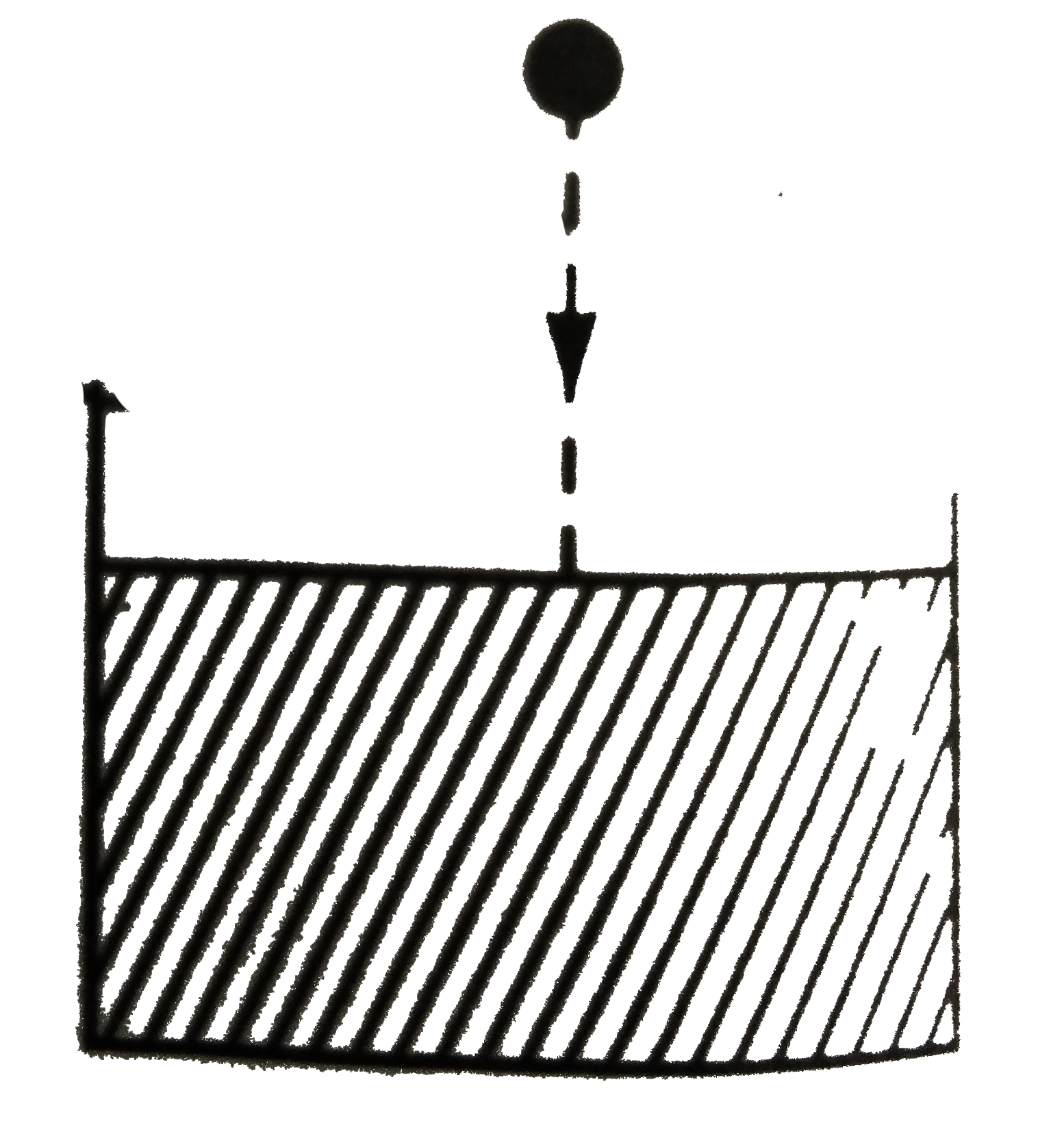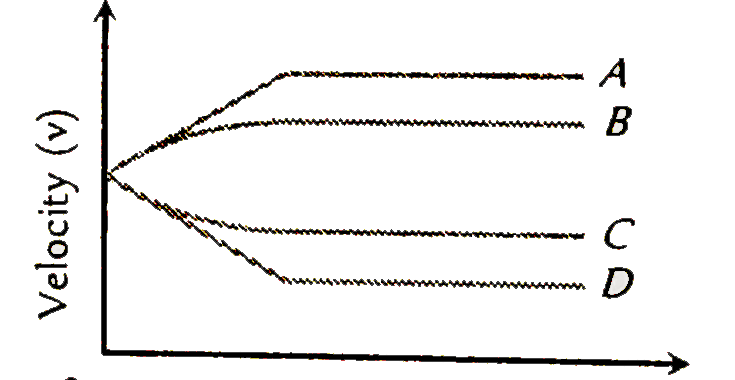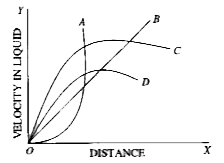A small tiny lead shot is gently dropped on the surface of a viscous liquid
the lead shot will fall will an acceleration equal to g at that place
the velocity of the lead shot will decrease with time
the velocity of the lead shot will increase continuously
the velocity of the lead shot will reach a steady value after sometime
The correct Answer is:D
To solve the problem of a small tiny lead shot being dropped into a viscous liquid, we need to analyze the forces acting on it and understand the motion of the lead shot over time. Here’s a step-by-step breakdown:
Step 1: Identify the Forces Acting on the Lead Shot
When the lead shot is dropped into the viscous liquid, two primary forces act on it:
- Weight (W): This is the force due to gravity acting downwards, given by W=mg, where m is the mass of the lead shot and g is the acceleration due to gravity.
- Drag Force (F_d): This is the resistive force exerted by the viscous liquid acting upwards, which is proportional to the velocity of the lead shot. It can be expressed as Fd=6πηrv, where η is the viscosity of the liquid, r is the radius of the lead shot, and v is the velocity.
Step 2: Analyze the Motion of the Lead Shot
Initially, when the lead shot is dropped, its velocity v is zero. As it begins to fall, the drag force Fd starts at zero and increases gradually as the velocity increases.
Step 3: Determine Terminal Velocity
The lead shot will continue to accelerate until the drag force equals the weight of the lead shot. At this point, the net force acting on the lead shot becomes zero, and it reaches a constant velocity known as the terminal velocity. This can be expressed mathematically as:
mg=Fd
mg=6πηrvt
where vt is the terminal velocity.
Step 4: Analyze the Options
Now, let’s evaluate the provided options based on our analysis:
1. The lead shot will fall with an acceleration equal to zero.
- This is incorrect at the moment of dropping since the lead shot initially accelerates due to gravity until it reaches terminal velocity.
2. The velocity of the shot will decrease with time.
- This is incorrect. The velocity will initially increase until it reaches terminal velocity.
3. The velocity of the lead shot will increase continuously.
- This is incorrect because the velocity will not increase indefinitely; it will reach a steady state (terminal velocity).
4. The velocity of the lead shot will reach a steady state after some time.
- This is correct. Eventually, the lead shot will reach terminal velocity where the forces balance out.
Conclusion
The correct option is that the velocity of the lead shot will reach a steady state after some time.
When the lead shot is dropped into the viscous liquid, two primary forces act on it:
- Weight (W): This is the force due to gravity acting downwards, given by W=mg, where m is the mass of the lead shot and g is the acceleration due to gravity.
- Drag Force (F_d): This is the resistive force exerted by the viscous liquid acting upwards, which is proportional to the velocity of the lead shot. It can be expressed as Fd=6πηrv, where η is the viscosity of the liquid, r is the radius of the lead shot, and v is the velocity.
Initially, when the lead shot is dropped, its velocity v is zero. As it begins to fall, the drag force Fd starts at zero and increases gradually as the velocity increases.
The lead shot will continue to accelerate until the drag force equals the weight of the lead shot. At this point, the net force acting on the lead shot becomes zero, and it reaches a constant velocity known as the terminal velocity. This can be expressed mathematically as:
mg=Fd
mg=6πηrvt
where vt is the terminal velocity.
Now, let’s evaluate the provided options based on our analysis:
- This is incorrect at the moment of dropping since the lead shot initially accelerates due to gravity until it reaches terminal velocity.
- This is incorrect. The velocity will initially increase until it reaches terminal velocity.
- This is incorrect because the velocity will not increase indefinitely; it will reach a steady state (terminal velocity).
- This is correct. Eventually, the lead shot will reach terminal velocity where the forces balance out.
The correct option is that the velocity of the lead shot will reach a steady state after some time.
Similar Questions
A ball of density ρ is dropped from a height on the surface of a non-viscous liquid of density 2ρ. Choose the correct options.

View SolutionA small ball is dropped from a certain height on the surface of a non-viscous liquid of density less than the density of ball. The motion of the ball is
View SolutionName the following:
The tiny pores on the surface of leaves.
View SolutionA small spherical solid ball is dropped from a great height in a viscous liquid. Its journey in the liquid is best described in the diagram given below by the

View SolutionA small spherical solid ball is dropped in a viscous liquid. It journey in the liquid is best described in the Fig. 15.5.1 by

View SolutionA sphere of radius R is gently dropped into liquid of viscosity η in a vertical uniform tube. It attains a terminal velocity v. Another sphere of radius 2R when dropped into the same liquid, will attain its teriminal velocity.
View SolutionA spherical ball is dropped in a long column of a viscous liquid. The speed of the ball as a function of time may be best represented by the graph

View SolutionDensity of a liquid varies with depth as ρ=αh. A small ball of density ρ0 is released from the free surface of the liquid. Then
View SolutionThe tiny free-swimming animals on the surface of water constitute
View SolutionWhen a greased iron needle is placed gently on the surface of water at rest, it floats on the surface of water. Why?
View Solution
